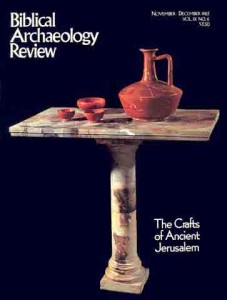Discovering Jerusalem: Recent Archaeological Excavations in the Upper City
Nahman Avigad (Thomas Nelson: Nashville, 1983), 268 pp., $24.95
Not only is Jerusalem the most excavated city in the world, it is also the most fascinating to dig. Excavations in Jerusalem date back more than a century. The most productive projects, however, have occurred during the last 20 years.
Recent archaeological investigations have concentrated on the area adjacent to the Temple Mount, on the City of David (or Ophel), and on the Jewish Quarter of the Old City. The Temple Mount area and the City of David had been the subjects of earlier excavations, but the Jewish Quarter had never been dug before. For ten years, beginning in 1969, Nahman Avigad of the Hebrew University conducted a systematic and stratigraphic dig within the Jewish Quarter of Jerusalem’s Old City. A distinguished scholar, Avigad is one of Israel’s best-known epigraphists and archaeologists.
Avigad’s dig was really a salvage project. After the Old City passed into Israeli hands during the Six-Day War of 1967, the Jewish Quarter was extensively reconstructed. In the rebuilding process, the Israeli authorities made room for archaeological investigation. Competing with the modern builders, Avigad and his team were always one step ahead of them.
Present plans call for incorporating into the new construction of the Jewish Quarter several of the architectural features, including the cardo, unearthed by the archaeologists. What better way to show continuity!
Already a library member? Log in here.
Institution user? Log in with your IP address.

